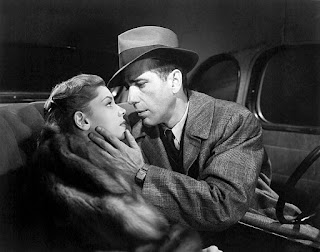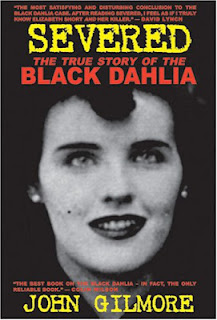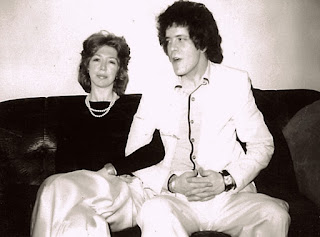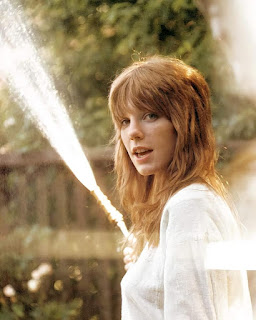Blood’s a Rover is a thrilling conclusion to James Ellroy’s Underworld USA trilogy. One person who will not be giving a good review is the social commentator, urban theorist, historian, political activist and professional James Ellroy-hater, Mike Davis. In his acclaimed work, City of Quartz: Excavating the Future of Los Angeles (1990), Davis wrote an engrossing study of the socio-economic and cultural problems in Los Angeles. He also used the book to take a few potshots at James Ellroy: "Now let me tell you who I can’t stand, and to top the list I would put that neo-Nazi James Ellroy. And to begin with he’s not a good writer. Each of his books is anti-communistic, anti-Mexican, and racist. His Los Angeles Quartet, depending on one’s viewpoint, is either the culmination of the genre, or its reductio ad absurdum. At times an almost unendurable wordstorm of perversity and gore, Quartet attempts to map the history of modern Los Angeles as a secret continuum of sex crimes, satanic conspiracies, and political scandals. For Ellroy, as for John Gregory Dunne in True Confessions, the grisly, unsolved ‘Black Dahlia’ case of 1947 is the crucial symbolic commencement of the postwar era–a local ‘name of the rose’ concealing a larger metaphysical mystery. Yet in building such an all-encompassing noir mythology (including Stephen King-like descents into the occult), Ellroy risks extinguishing the genre’s tensions, and inevitably its power. In his pitch blackness there is no light left to cast shadows and evil becomes a forensic banality. The result feels like the actual moral texture of the Reagan-Bush era: a supersaturation of corruption that fails any longer to outrage or even interest."
To an aspiring writer, Ellroy concedes Raymond Chandler's influence is beneficial; Brown’s Requiem melds Ellroy’s ‘personal prejudices’ onto the formula Chandler created in the Philip Marlowe novels. But rather than develop this Chandler-inspired narrative further, Ellroy claims that after the publication of his first novel, the influence came to an abrupt halt. Yet, unlike Ross MacDonald, whom Ellroy does not go back to, Ellroy cannot help but refer to Chandler (again). This inspiration, and subsequent recantation, focuses on Chandler’s work as a novelist. While Chandler made his name writing for pulp magazines such as Black Mask, Ellroy by contrast ‘didn’t buy the old canard that you had to start by writing short stories’ (2008). This criticism is ironic given that Ellroy’s own education as a writer had been through reading pulp novels, and when, after developing a successful career as a novelist, Ellroy turned to composing his own short stories, he did not show much flair for them. Despite this, Ellroy has consistently stated that the private eye novels that could be considered Chandler-influenced were no longer present in his work. Arguably, Ellroy’s noir settings and old Hollywood narratives, would evoke, if not Chandler, then his contemporaries. The author Ellroy would credit with being an influence, more than anyone else, on the LA Quartet was Dashiell Hammett. As Lee Clark Mitchell has argued though, major thematic and stylistic differences which supposedly separate Chandler and Hammett’s work are less significant than has been assumed: "At first glance Chandler seems utterly different from Hammett, though it soon becomes clear that he embraces his predecessor’s techniques, extending and complicating them via both setting and syntax. Or rather, he takes Hammett’s concentration on quirky details and ups the ante by lowering the stakes, giving us less essential description, more frequent diversions and digressions, as a way of further impeding the plot. Ellroy has been guilty of simplifying Chandler’s legacy, limiting it to the creation of the easily imitated hardboiled private detective. Ellroy ‘ups the ante by lowering the stakes’. The paradox here is that the hardboiled PI is not Chandler’s creation alone, his legacy is creatively bigger than Ellroy gives him credit for. Ellroy began shifting his vision of the genre to Hammett, while not acknowledging that Chandler ‘embraces his predecessor’s techniques’. Yet, in interviews, Ellroy would rarely bring up Chandler’s name without also mentioning Hammett and vice versa, indicating some innate understanding of their pairing. Ellroy’s open acknowledgement then disavowal of Chandler has not had its similar counterpart in Hammett, partly because Hammett’s influence on Ellroy’s work was more subliminal. As late as 2008, Ellroy claimed that in retrospect the work of Hammett had been more influential than he realised. Ellroy looks more kindly on these subconscious influences, as his debt during and after the writing process is indistinct. They are not fully formed fonts of inspiration, as MacDonald ‘my greatest teacher’ was, nor do they provide any tangible impediment to creativity, as Chandler’s PI in Brown’s Requiem did.
By continually playing Hammett against Chandler, the defined and the undefinable, Ellroy has purposefully created a paradox in his relationship with two of the most important practitioners of detective fiction. Ellroy’s definition of the two men is key: Chandler, in Ellroy’s view, was conservative and set the conventions of the genre, whereas Hammett’s writing was edgy and existed in a narrative world without conventions. It is not difficult to observe, given Ellroy’s somewhat unhinged Demon Dog persona, why he would prefer the latter influence. But the oppositional roles he designs for both authors, both oddly reliant on each other, are too simplistic and conveniently suited to the image Ellroy was trying to acquire. Chandler’s influence on Ellroy’s work extended far further than the debut novel in which Ellroy has always attempted to contain it, and that, much like how he overlooked Hammett for lengthy periods of his career, the Chandler effect has been more complex, undefinable and subliminal. Neither Hammett nor Chandler could have known the enormous influence their writing would have in the field of crime fiction over fifty years since their death. Both men died relatively young, unhappy, and past their best. Neither man produced as much as was expected of their peers, such as Erle Stanley Gardner who wrote hundreds of books and had to employ pseudonyms in order to effectively market the enormous output. Nor was there such an interest in crime fiction as an academic discipline. It fell on Chandler himself to codify some of the traits of the hardboiled school in The Simple Art of Murder (1944), a practice which was common among writers from the Golden Age of detective fiction which Chandler explicitly criticises. By separating Chandler’s detective ‘man of honor’ from the ‘toadies of the system’ Ellroy brings the genre full circle. Source: venetianvase.co.uk
Fred Otash is back! Actually, he’s dead. He’s stuck in ‘Penance Penitentiary, Reckless-Wrecker-Of-Lives Block, Pervert Purgatory’. Otash decides to pen a confessional in the hopes of improving his eternal fate. The action jumps back to 1950’s LA, and Freddy’s in his prime. He’s verifying salacious stories for the scandal-rag Confidential. He’s an informer for LAPD Chief William H Parker, who wants to lure Confidential into a honeytrap that will topple its tabloid crown. Freddy’s got the goods on everyone in Hollywood. Otash sees the libertine, hypocritical side of Hollyweird which is closed off to the public. He knows that Phyllis Gates ain’t gonna turn her husband Rock Hudson straight, but frankly the portrayal of that couple is relatively tender given the sordid conduct of everyone else. Then Otash falls in love with the actress Lois Nettleton, and we are reminded that behind the glitz and glamour, Hollywood is still the land of dreamers and hopeless romantics. Widespread Panic is quintessential Ellroy, but with enough alliteration, Hollyweird flavor, booze, distressed damsels, communist conspiracies, and extortion to make this the most Ellroy novel he's ever written. Confidential, in this account, reaches its tentacles into everything. There is an odd echo of J. G. Ballard, in the sense that Hollywood is at once the most unreal and most truthful expression of the historical zeitgeist. Source: www.the-tls.co.uk
The influence of Confidential magazine is given more page space in Widespread Panic than in Ellroy’s previous work – the novel is all tattle and scoop, blackmail and gladhanding. The hushed-up scandals of the stars had formed a crucial part of Ellroy’s earlier L.A. novels, with his plotting often bringing criminal and celebrity into close proximity, but Hollywood was always used as colour, relief, subplot. Here it takes centrestage, as stars and showbiz types become the engine for murder and multiple modes of malfeasance. Unlike his most recent novels, which restlessly move between numerous voices and perspectives, Widespread Panic is a straight shot –– a weird, raucous, digressive piece of literary insolence. Widespread Panic is a happy roll around in the mud for 300 breakneck pages, with its occasional gestures towards redemptive amour. Otash sleeps with Elizabeth Taylor, beats up Johnnie Ray, turns James Dean into a narc, arranges marital cover for Rock Hudson and funnels pills to Jack Kennedy. While most of his “Hollyweird” riffs are familiar – no one, for example, will be shocked by the Rock Hudson revelations found in Widespread Panic – even his wilder, near-slanderous exaggerations about the private lives of Nick Ray and James Dean feel like comic riffs on fame’s false currency, mere tampering with figures too readily lost to sentimental mythologising. It also helps that Ellroy’s hyperbole and bad taste inventions are so broad and comic that only a dullard could mistake the legend for fact. Freddy Otash isn’t beyond redemption. He has a soft spot for imperiled dames, and now and then, noir chump that he is, he falls for one of them. At last finding the girl of his dreams in actress Lois Nettleton, Freddy croons: “You’ve got this haunted thing going. Like Julie Harris, but earthier and more pronounced.” In true noir fashion, she answers: “I want you to do something bold and brave and more than a little bit stupid, because that’s the type of man I throw myself at.” Source: www.themonthly.com.au
Here's how Otash describes the scene of a snuff movie premier for Hollywood movers and shakers: "It's the egalitarian epicenter of postwar America. It's a colossal convergence of the gilded and gorgeous, the defiled and demented, the lurid and the low-down. This seedy summit set the tone for the frazzled and fractured frisson that is our nation today." This book packs in everything Ellroy has obsessed about over the course of his career. There are echoes of American Tabloid here, The Black Dahlia makes an appearance, and it's a spiritual companion to L.A. Confidential. Widespread Panic is a macho noir-ish romp complete with historically accurate racist, sexist, and homophobic remarks. Anyone who's read Ellroy before—or heard him talk—knows his penchant for the underbelly of 1950s Hollywood can make his work ... not safe for work. Source: npr.org
Freddy Otash: I scoured scrapbooks. The old photos got my gears going. There’s pix of my lost love, Joi Lansing. There’s pix of my true love, Lois Nettleton. There’s my dictionary and thesaurus. They were teaching tools for the wrathful writers at Confidential. Utilize alliteration and instill intensive slurs. Homosexuals are “licentious lispers.” Lesbians are “beefcake butches.” Drunks are “bibulous bottle hounds” and “dyspeptic dipsos.” Vulgarize and vitalize. Claire Klein and Rock Hudson sat down with me. They held hands. They looked good together. They glowed. They were actors to their core. They were Strasbergites maimed by the Method. The homo heartthrob marries the sicko psychopath. I dressed sharp for Joi Lansing. I wore my crocodile loafers, a spritz of Lucky Tiger—and a short stroll to the meet. Googie’s was a coffee cave on Sunset and Crescent Heights. The space-age aesthetic rubbed me raw. Fluorescent lights, Naugahyde chrome. Joi Lansing table-hopped. She wore a too-tight gown and a meager mink stole with a pawnshop tag attached. Joi sat down. I pointed to the pawnshop tag. She pulled it off and dropped it in the ashtray. “I’m from Salt Lake City. I’m twenty-four. I went to the MGM school, and went nowhere.” “But now you’re up-and-coming?” Joi stubbed out her cigarette. “I’m uncredited in six pictures, and credited in four. I’ve got Racket Squad, Gangbusters, and a comedy with Jane Russell in the can.” “Give me some dirt on Russell.” “What’s to give? She’s a Goody Two-shoes married to that quarterback for the Rams.” She kissed me. I kissed her back. That’s how it all started.
I scrolled through Connie's columns: Steve Cochran is “leaning left these days.” “B-movie heartthrob Steve Cochran broke hearts at the Shriners last night, and not the hearts of the willing women so often attributed to him. He simply showered affection on those less fortunate than he, and in the process he claimed the hearts of many, including myself. Isn’t it time the world looked at this very talented young man as the gifted and sensitive artist that he is?” Time faltered and failed to trample my trance. Hours passed. Steve Cochran and Joi Lansing came out of the carport and headed for home. His home. Her home now. They lugged her luggage. The matched set I bought her. Monogrammed at Mark Cross. Some cute couple. A matched set. The Stacked and the Hung. Joi wobbled on too-high heels. A Band-Aid on Steve’s right cheek set off his jawline and failed to mar his good looks. Nobody knows my sorrow. Somebody, save me. Who said size doesn’t count? I’m sunk in this sink of self-hate.
Barbara Payton car-hopped and hooked out of Stan’s Drive-In. It was hard by Hollywood High. She hit her Hollyweird high with Kiss Tomorrow Goodbye, circa ’50. She was Mrs. Franchot Tone for a while. Tom Neal beat Timid Tone half dead and conquered Babs with his lurid love. Tattle told the torchy tale, circa ’51. I pulled into Stan’s. A comely carhop cadre caught sight of Big Freddy O. Babs and I go back. We badger-gamed businessmen in my cop days. Babs snared the schnooks at the Kibitz Room at Canter’s Delicatessen. She lured them to the Lariat Motel on Lankershim. She socked the saps into the saddle and made with the moans. I kicked the door in and played irate husband. I glommed the gelt and kicked the cads back out the door. Babs roller-skated over. She wore red-and-white jodhpurs and a too-tight jersey top. She said, “Here’s trouble.” She hooked a tray to my passenger-side door. I dropped a C-note on the tray. Babs got the gestalt. She got in and sat beside me. Babs scooched down and swung her legs up. Her skate boots nudged her knees and fit fetishistic. She posed pouty and ran the rollers on my dashboard. “I’m on my break for the next fifteen minutes. Before you start, let me state no more shakedowns.” I laffed and lit a cigarette. Babs bummed a smoke and lit it off my lighter. “Freddy, the point of all this is—” “Steve Cochran. The smut film he’s making, and don’t ask me how I know about it.” Babs said, “Ha-ha. You’re jealous, because Joi’s in the flick, and she left you for Steve. I don’t blame you, I’d be jealous, too.” I rebuffed her remark and said: “Update me. The film, who Steve’s conned into appearing, the start date, the whole schmear.” Babs shrugged.
“Steve’s wrapping Private Hell 36 this week, so we’ll start pretty soon. Probably within the next two weeks. Lana Turner, Lex Barker, and Gene Tierney have dropped out, which I know don’t surprise you. Steve’s stuck with me, Joi, and Anita O’Day, and he’s recruiting an additional ten girls, which makes the full thirteen women that Steve will repopulate the world with, after the A-bomb wipes everybody else on Earth out. Need I say that Steve’s hipped on the A-bomb like nobody I’ve ever seen.” I went Don’t stop now. Babs rolled her rollers on my red leather dashboard. Babs tapped ash out the window. “The premiere is sometime later this spring, in Harry Cohn’s rec room." “Why would Jack’s name be in Steve’s address book? Why would Jack Kennedy and Steve Cochran be calling each other?” Babs said: “Because Steve’s Jack’s dope supplier in L.A. Because Steve rolls left, and Jack’s a barely suppressed bleeding heart, right below the surface.” ––Widespread Panic (2021) by James Ellroy
























































